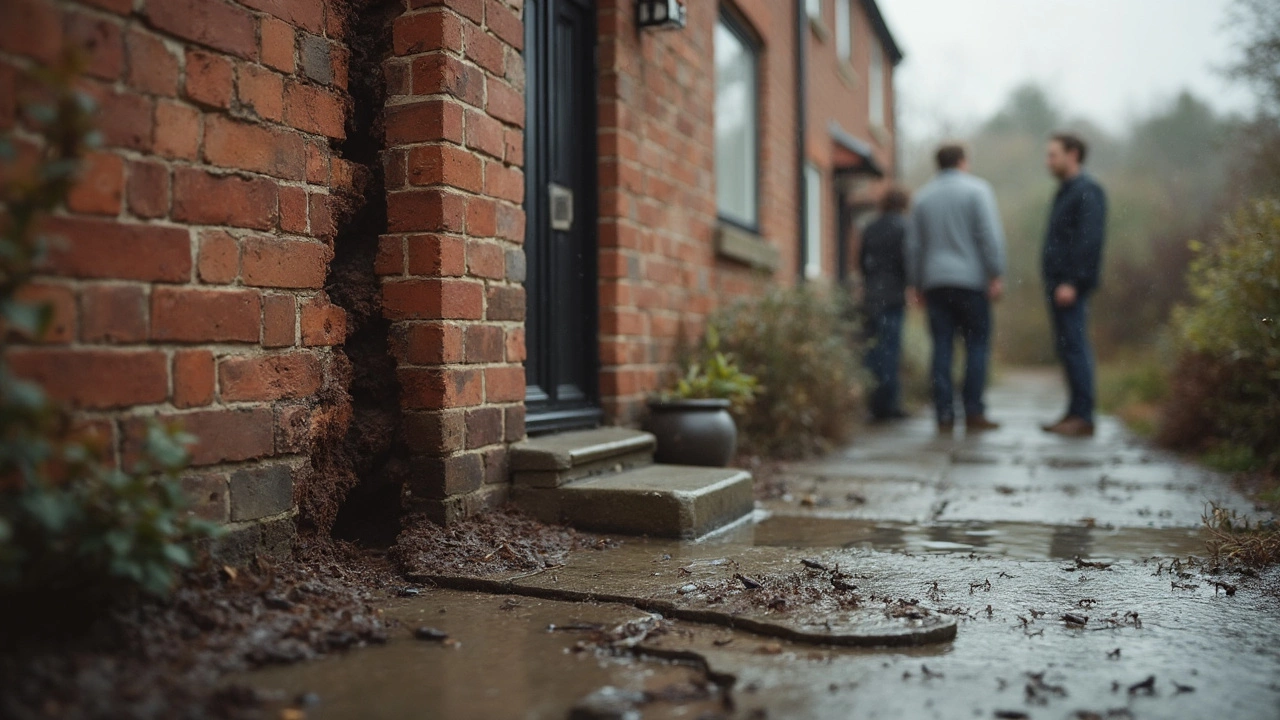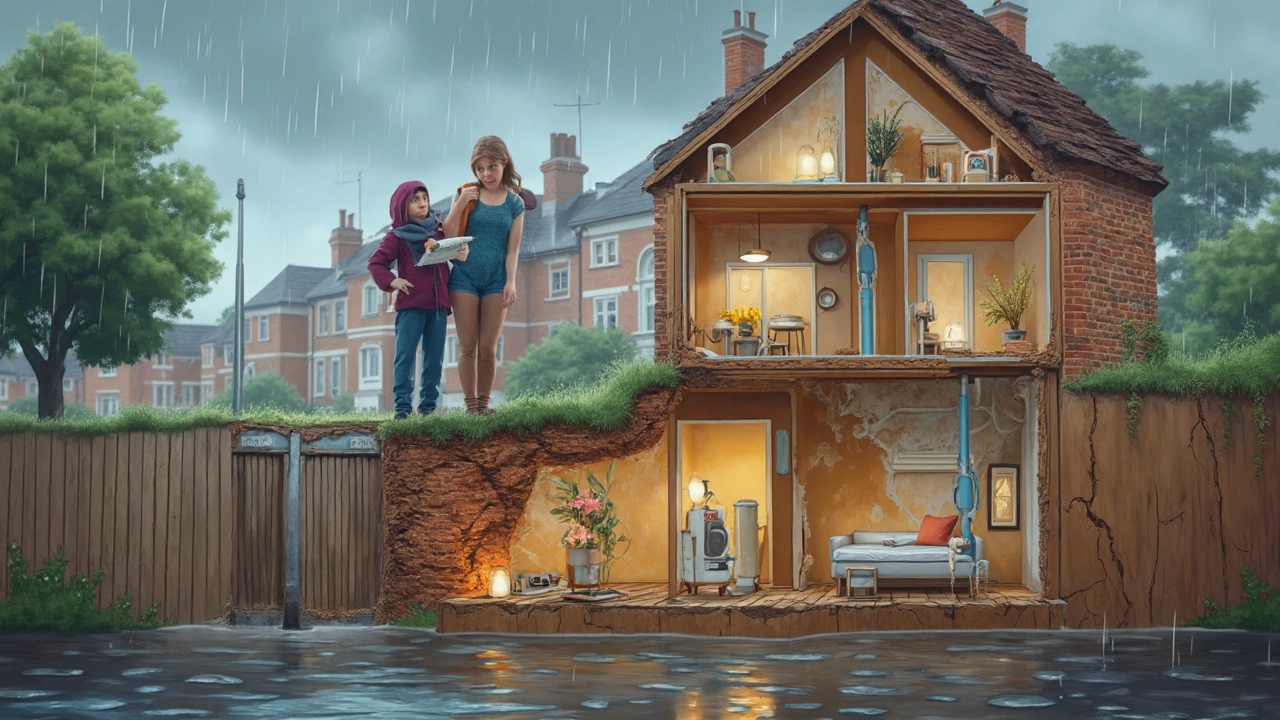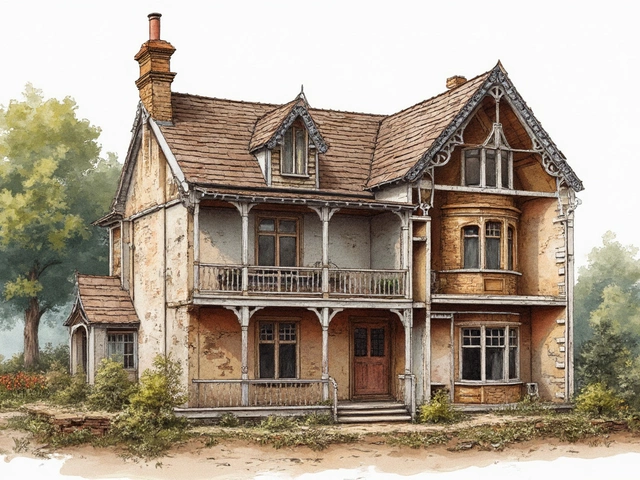Foundation cracks always look harmless at first—just a little line here or there. But faking ignorance can set you up for far worse than an eyesore. Even a hairline crack can open the door to annoying and expensive problems you weren't expecting.
Ever noticed musty smells or a chill that just won't go away in your basement? That's often the work of water leaking through tiny foundation cracks. And nobody wants mold creeping into their walls or ruining that storage stuff you forgot you had. Let a crack sit long enough, and it’s not only water. Sooner or later, pests start squeezing through, too.
Maybe you're thinking: "If the house isn't falling down, it can't be that bad, right?" Here’s the truth—cracks don't fix themselves, and waiting means you could end up with walls or floors that are slanted, stubborn doors, and windows that won’t budge. And if you ever plan on selling your place? Buyers get spooked fast when they hear "foundation problems." Fixing a crack early is way less stressful than facing repairs that run into the thousands, or dropped home value that never really bounces back.
- Why Do Foundation Cracks Happen?
- The Silent Dangers of Leaving Cracks Alone
- How Cracks Turn Into Bigger Headaches
- Smart Moves to Prevent Costly Damage
Why Do Foundation Cracks Happen?
It’s easy to blame old age, but that’s not the whole story when it comes to cracks in your home’s foundation. There are a few main reasons cracks show up, and some of them might surprise you.
The biggie is soil movement. The dirt around your foundation isn’t as stable as it looks. If you live in an area with a lot of clay in the soil, it can swell when it gets wet and shrink when it dries out—kind of like a sponge. All that swelling and shrinking pushes and pulls on your foundation, making it crack over time.
Another huge factor is poor drainage. When water doesn’t drain away from your house, it seeps down next to the walls, adding extra pressure. Heavy rain or snowmelt can really ramp this up. That pressure eventually forces its way in and—boom—cracks form.
Sometimes, foundations are poured on soil that wasn’t packed down well enough. If the ground settles unevenly (which happens a lot with new homes), your foundation shifts and develops cracks as things move around.
Extreme temperature swings don’t help either. When it’s freezing cold one week and blazing hot the next, concrete expands and shrinks. That’s a recipe for stress cracks, especially in places like garages or unfinished basements.
Check out this quick list to keep an eye out for:
- Soil types that expand and contract (lots of clay is a bad sign)
- Poor drainage around the home—downspouts dumping water right next to the foundation
- Signs of ground settling, like small dips near your home’s exterior
- Big temperature swings throughout the year
If you spot any of these clues, you’re already ahead of the game. Ignoring them is just asking for trouble—and fast. Keep in mind, a foundation crack can be the first sign something bigger is about to go wrong.
The Silent Dangers of Leaving Cracks Alone
It’s easy to shrug off a little foundation crack, but that crack isn’t just a “cosmetic problem.” It’s like a signal flare for bigger problems brewing underneath. The scary part? The real damage often happens where you can’t see it until things get expensive or dangerous.
Moisture is usually the first invader. Even a thin crack will let ground water sneak in, especially after rains or when the snow melts. That moisture can lead to toxic mold and mildew growth, and guess what? The Environmental Protection Agency points out that indoor exposure to mold can cause health problems, especially for people with allergies or weak immune systems. It doesn’t take much moisture for this to happen—just a small crack is enough.
Termites and carpenter ants are another risk. These pests love damp wood, and a crack in your foundation is an open invitation. According to the National Pest Management Association, termites cause about $5 billion in U.S. property damage each year. Most insurance policies won’t even cover that.
Structural damage creeps up on you, too. As the crack widens, your floors can start to slope, doors may jam, and windows can get stuck. None of this happens overnight, but by the time you notice, the fixes may eat a hole in your savings.
| Problem | Chance if Ignored | Estimated Repair Cost |
|---|---|---|
| Moisture Intrusion | High | $1,000 - $4,000* |
| Mold Growth | Medium to High | $500 - $6,000* |
| Pest Infestation | Medium | $500 - $2,500* |
| Major Structural Repairs | Rises Over Time | $10,000 - $30,000* |
*Estimated average costs for residential properties in the U.S. (2024)
And here’s a big one—if your foundation shift keeps up, it can even mess with your plumbing. Pipes running through the slab might crack, putting you at risk for leaks and big repair bills. Not fun.
So, if you spot a foundation crack, don't play the waiting game. Early fixes protect your home, your wallet, and save you a lot of stress down the line.

How Cracks Turn Into Bigger Headaches
Ignoring a foundation crack is like ignoring a leaky roof. It never gets better on its own, and the longer you wait, the worse (and pricier) things get. Small cracks let in moisture. That means basements get damp, floors start to warp, and there’s a real shot at ending up with black mold behind your walls. Did you know the CDC has linked prolonged mold exposure to breathing trouble and allergy flare-ups? Nobody wants their house making them sick.
But it’s not just about what you can see or smell. Even a thin crack grows over time, especially with freeze-thaw cycles in places that get real winters. As water seeps into the crack and then freezes, it expands, literally forcing the split wider. That process can take a crack from barely visible to wide enough for bugs, mice, or bigger pests. And with more water flow, your home’s concrete can start to break down. That’s serious territory.
Want the ugly truth? Foundation cracks mess with your whole house:
- Floors begin to slope.
- Doors stick or won’t latch even after adjusting them.
- Windows jam up and start showing gaps—bad news for heating/cooling costs.
- Support beams can gradually get pushed out of their proper spot, risking even more structural issues.
Don’t just take my word for it. Check out what foundation repair pros and real estate agents have seen over the years:
| Issue | Average Cost if Ignored | Typical Timeline for Worsening |
|---|---|---|
| Simple Crack Sealing | $250 - $800 | Can be done right away |
| Mold & Water Damage Cleanup | $2,000 - $6,000 | Within 6-12 months |
| Major Structural Repair | $10,000 - $40,000+ | 2-5 years of neglect |
If you ever want to sell, expect buyers (and inspectors) to toss up red flags. Foundation issues can tank your home’s value by up to 20%. That alone can mean tens of thousands lost, just from letting that foundation crack slide year after year. It’s way easier—mentally and financially—to fix problems while they’re still small.
Smart Moves to Prevent Costly Damage
Waiting on a foundation crack is a gamble you usually lose. But keeping your home safe doesn't have to be a huge project. Here are real moves you can make that actually save money and stress in the long run.
- Foundation crack inspections: Schedule a check at least once a year, or right after big rainstorms or dry spells. Cracks often creep in after sudden shifts in weather or if the soil around your home changes fast.
- Keep gutters and downspouts in check: Clean gutters so they don’t overflow, and point downspouts away from your foundation. It takes only one bad clog for water to pool and slip through cracks.
- Grade your yard: Dirt should slope away from the house to stop water puddling up near the base. Even a few inches can steer hundreds of gallons away during a storm.
- Seal cracks early: Small cracks are the cheapest and quickest to fix. Waiting lets them widen, making them harder (and pricier) to patch up.
- Watch for sticky doors or floor gaps: Sometimes, you’ll feel a problem before you see it. Slanted floors, doors rubbing or not shutting—these can be your first big warning signs.
Here’s how much these smart moves can save you compared to letting things slide:
| Prevention Step | Typical Cost | Cost if Ignored |
|---|---|---|
| Annual Inspection | $150-$500 | $7,000+ (major structural repair) |
| Crack Sealing (early) | $300-$800 | $5,000+ (water damage repair) |
| Regrading Yard | $1,000-$2,500 | $4,500+ (settling/foundation shift) |
| Gutter Maintenance | $100/year | $2,000+ (flooded basement) |
One quick call to a specialist or a Saturday with a shovel might save you a five-figure headache. Foundation cracks won’t wait, so neither should you.





